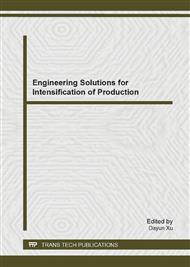p.45
p.52
p.58
p.63
p.66
p.70
p.76
p.82
p.88
Review on Surface Failure Mode of Metallic Materials in Very High Cycle Fatigue Regime
Abstract:
With higher cleanness upgraded steadily, surface failure of metallic materials in very high cycle fatigue (VHCF) regime beyond 107 cycles has been reported one after another. The occurrence of surface crack initiation to failure in VHCF regime is closely related to the following factors: (i) surface finishing condition of specimen, i.e. whether some grinding scratches, grooves and cavities with a relatively larger size than the subsurface defect exist at the surface of specimen; (ii) type, size, location, distribution and density of metallurgical defects such as inclusion contained in the subsurface of material; (iii) degree of persistent slip band (PSB) deformation induced by surface roughening of specimen, mainly corresponding to the some ductile single-phase metallic materials.
Info:
Periodical:
Pages:
66-69
Citation:
Online since:
February 2014
Authors:
Price:
Сopyright:
© 2014 Trans Tech Publications Ltd. All Rights Reserved
Share:
Citation:


